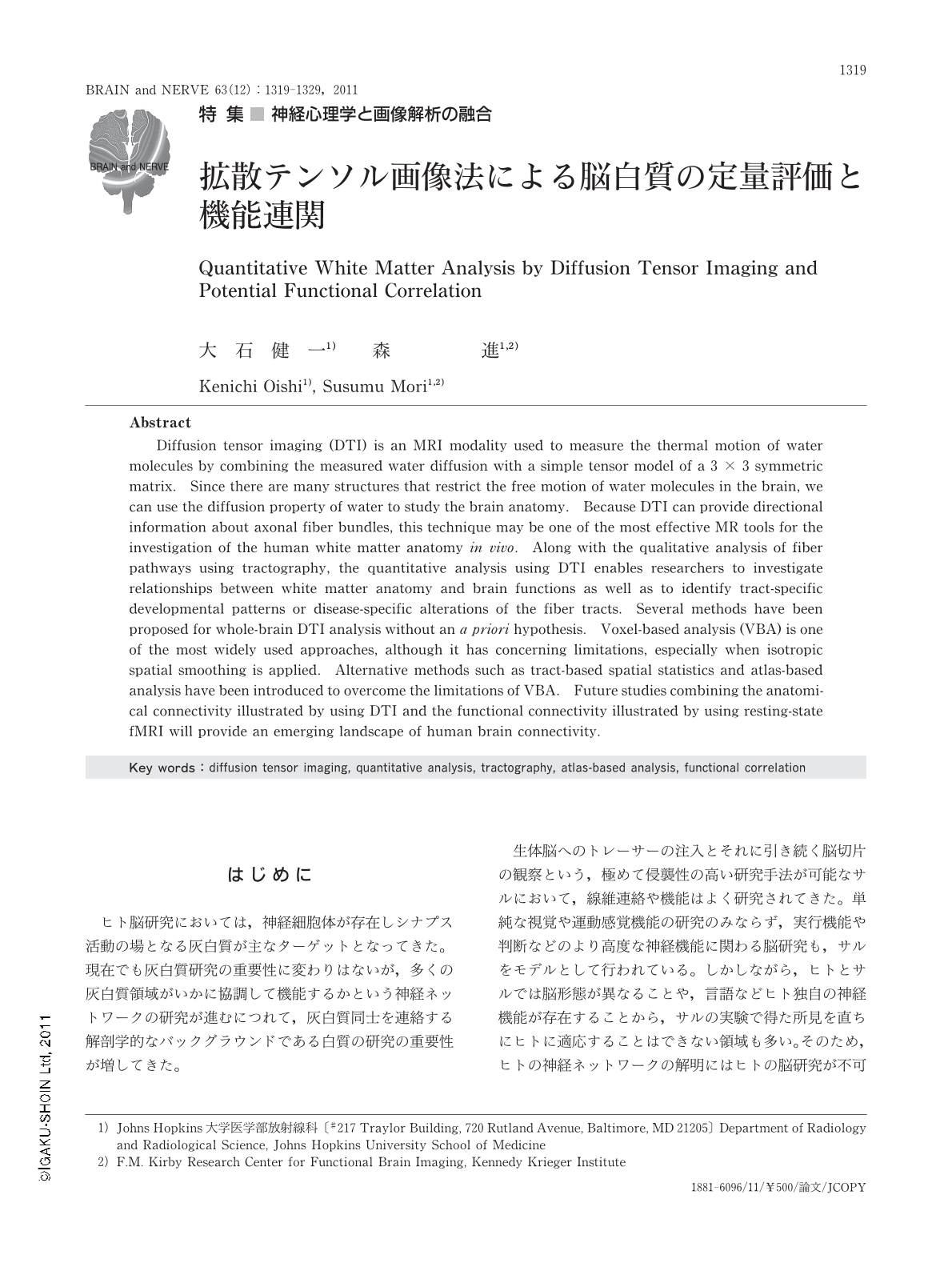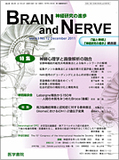Japanese
English
- 有料閲覧
- Abstract 文献概要
- 1ページ目 Look Inside
- 参考文献 Reference
- サイト内被引用 Cited by
はじめに
ヒト脳研究においては,神経細胞体が存在しシナプス活動の場となる灰白質が主なターゲットとなってきた。現在でも灰白質研究の重要性に変わりはないが,多くの灰白質領域がいかに協調して機能するかという神経ネットワークの研究が進むにつれて,灰白質同士を連絡する解剖学的なバックグラウンドである白質の研究の重要性が増してきた。
生体脳へのトレーサーの注入とそれに引き続く脳切片の観察という,極めて侵襲性の高い研究手法が可能なサルにおいて,線維連絡や機能はよく研究されてきた。単純な視覚や運動感覚機能の研究のみならず,実行機能や判断などのより高度な神経機能に関わる脳研究も,サルをモデルとして行われている。しかしながら,ヒトとサルでは脳形態が異なることや,言語などヒト独自の神経機能が存在することから,サルの実験で得た所見を直ちにヒトに適応することはできない領域も多い。そのため,ヒトの神経ネットワークの解明にはヒトの脳研究が不可欠である。
機能的ネットワークに関しては機能的磁気共鳴画像法(functional magnetic resonance imaging:fMRI)を用いた研究が盛んに行われ,特にBiswalら1)によって最初に報告されたresting-state fMRIがこの分野をリードしている。一方,拡散テンソル画像法(diffusion tensor imaging:DTI)を用いた解剖学的ネットワークの研究には,fMRIによって推定された機能的ネットワークに対して解剖学的な裏づけを与えることが期待されている。
Abstract
Diffusion tensor imaging (DTI) is an MRI modality used to measure the thermal motion of water molecules by combining the measured water diffusion with a simple tensor model of a 3 × 3 symmetric matrix. Since there are many structures that restrict the free motion of water molecules in the brain,we can use the diffusion property of water to study the brain anatomy. Because DTI can provide directional information about axonal fiber bundles,this technique may be one of the most effective MR tools for the investigation of the human white matter anatomy in vivo. Along with the qualitative analysis of fiber pathways using tractography,the quantitative analysis using DTI enables researchers to investigate relationships between white matter anatomy and brain functions as well as to identify tract-specific developmental patterns or disease-specific alterations of the fiber tracts. Several methods have been proposed for whole-brain DTI analysis without an a priori hypothesis. Voxel-based analysis (VBA) is one of the most widely used approaches,although it has concerning limitations,especially when isotropic spatial smoothing is applied. Alternative methods such as tract-based spatial statistics and atlas-based analysis have been introduced to overcome the limitations of VBA. Future studies combining the anatomical connectivity illustrated by using DTI and the functional connectivity illustrated by using resting-state fMRI will provide an emerging landscape of human brain connectivity.

Copyright © 2011, Igaku-Shoin Ltd. All rights reserved.


